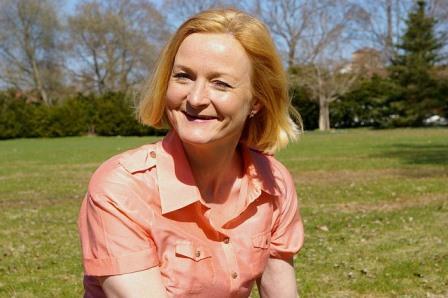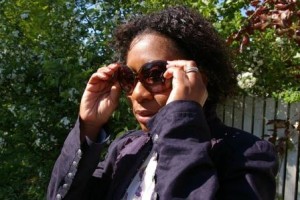- Calls to this hotline are currently being directed to Within Health, Fay or Eating Disorder Solutions
- Representatives are standing by 24/7 to help answer your questions
- All calls are confidential and HIPAA compliant
- There is no obligation or cost to call
- Eating Disorder Hope does not receive any commissions or fees dependent upon which provider you select
- Additional treatment providers are located on our directory or samhsa.gov
Identifying and Treating OFSED in the Middle Aged Adult

Contributor: Libby Lyons, MSW, LCSW, CEDS, writer for Eating Disorder Hope.
62% of women over the age of 50 felt their weight or shape had a negative impact on their life [1]. For a women struggling with an eating disorder in midlife, the disorder can affect marriage, partnership, children, job, and even parents. Treatment is typically difficult than younger counterparts. Parents may no longer be alive and partners are often a support in therapy and treatment. Typically, women in midlife present with varying symptoms from that of Anorexia or Bulimia.
OSFED and EDNOS
One such variation is the diagnosis of Other Specified Feeding and Eating Disorder (OSFED) which has recently replaced the Eating Disorder Not Otherwise Specified (EDNOS) diagnosis is the DSM-5. Even though anorexia, bulimia, and binge eating are common among all ages, OSFED is where many individuals get categorized. The DSM-5 recognizes five specific Other Specified Feeding and Eating Disorder (OSFED) subtypes:
- Atypical Anorexia Nervosa (i.e., anorexic features without low weight)
- Bulimia Nervosa (of low frequency and/or limited duration)
- Binge Eating Disorder (of low frequency and/or limited duration)
- Purging Disorder
- Night Eating Syndrome
There are three sub-types of OFSED in Middle Aged women. First is Early Onset Chronic Disorder which is when the eating disorder presents early in life and continue to struggle with symptoms through adulthood. Typically, this subpopulation does not see much relief from symptoms. Secondly is Early Onset Relapsed Disorder where women relapse with eating disorder symptoms earlier than middle age. They may have experienced periods of recovery prior to relapse over 50. Thirdly, is Late Onset Disorder where the disorder first presents in age 40 to 50’s.
Struggles not Specific to Age
We see many similarities between midlife women and adolescents and young adults. Weight is not as significant clinical marker to illness but rather negative and obsessive thinking patterns, feelings of guilt and shame around food, and body image disturbance. Symptoms of purging, intake restriction, and binging are common across all ages and can cause distress. Women over age fifty struggle not only with atypical body image concerns such as disliking the size or shape of body, but also struggle with aging-related issues.
 Treatment with this population can range from family support of engaging partners in the therapy and support process. Individual therapy with use of Cognitive Behavioral Therapy, Dialectical Behavioral Therapy and Expressive therapies is highly effective in the recovery process. These therapies can assist the client with connecting to their own thoughts and feelings through mindfulness, as well as practicing distress tolerance and emotional regulation skills.
Treatment with this population can range from family support of engaging partners in the therapy and support process. Individual therapy with use of Cognitive Behavioral Therapy, Dialectical Behavioral Therapy and Expressive therapies is highly effective in the recovery process. These therapies can assist the client with connecting to their own thoughts and feelings through mindfulness, as well as practicing distress tolerance and emotional regulation skills.
Cognitive therapy works on identifying and changing faulty thinking around poor body image and nutrition. Expressive therapies can help individuals connect nonverbally to their emotions and help identify self-sabotaging patterns. Group therapy is also beneficial with individuals struggling who can connect with peers who are also struggling with similar issues.
Many individuals feel emotions such as embarrassment and are hesitant to share with support systems due to judgement or fear of it being a ‘teen disease.’ These therapies combined can provide an effective treatment approach towards recovery.
Community Discussion – Share your thoughts here!
How do you feel about sharing in group therapy? Have you overcome some of the negative emotions that may be associated with group therapy at first? How has time changed this for you?
 About the Author: Libby Lyons, MSW, LCSW, CEDS is a specialist in the eating disorder field. Libby has been treating eating disorders for 10 years within the St. Louis area, and enjoys working with individuals of all ages.
About the Author: Libby Lyons, MSW, LCSW, CEDS is a specialist in the eating disorder field. Libby has been treating eating disorders for 10 years within the St. Louis area, and enjoys working with individuals of all ages.
References:
[1]: National Eating Disorders Association. (n.d.). Retrieved March 10, 2016, from http://www.nationaleatingdisorders.org/The opinions and views of our guest contributors are shared to provide a broad perspective of eating disorders. These are not necessarily the views of Eating Disorder Hope, but an effort to offer discussion of various issues by different concerned individuals.
We at Eating Disorder Hope understand that eating disorders result from a combination of environmental and genetic factors. If you or a loved one are suffering from an eating disorder, please know that there is hope for you, and seek immediate professional help.
Last Updated & Reviewed By: Jacquelyn Ekern, MS, LPC on May16, 2016
Published on EatingDisorderHope.com

The EatingDisorderHope.com editorial team comprises experienced writers, editors, and medical reviewers specializing in eating disorders, treatment, and mental and behavioral health.

